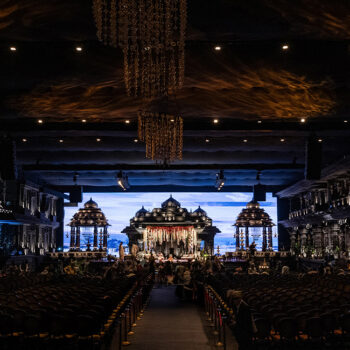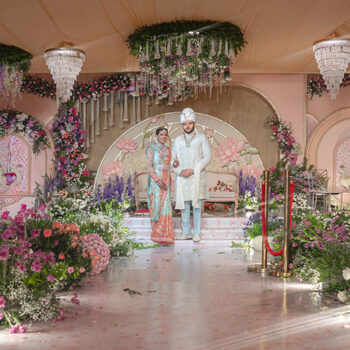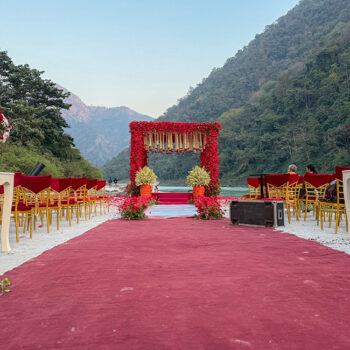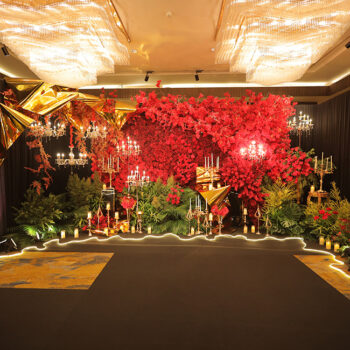This entry was posted
on Monday, July 1st, 2013 at 5:01:57 am and is filed under Wedding Planning.
You can follow any responses to this entry through the RSS 2.0 feed.
Both comments and pings are currently closed.
‘Indian Weddings- much has changed and much has not’
Wedding Planning - Jul 1, 2013
The Taj Group of Hotels, recently unveiled ‘The Taj Wedding Barometer’– a survey aimed at understanding the attitude, beliefs, trends and tastes of Indians towards the concept of marriage. The survey commissioned to the research agency IPSOS covered pan-India respondents and encompasses all the phases of the Indian wedding- the proposal, pre-nuptials, wedding to the honeymoon, and ‘the whole shebang’ that can be associated with the magnifique affair. Dr. Sujata Sriram, Associate Professor and Chairperson- Centre for Human Ecology, Tata Institute of Social Sciences who unveiled the survey findings along with Taj representatives at a roundtable held at The Taj Mahal Palace, Mumbai speaks to WeddingSutra and shares her insights.

Photo Courtesy- Atul Pratap Chauhan
Q- How much has changed when it comes to wedding celebrations?
Much has changed and much has not. Weddings even in the good old days were some sort of a ‘fashion show’ where women took out their best silk sarees and gold jewels, and other guests would admire them. It’s the same today. Every family wants to build their social circle; a wedding is one way to enhance it, there is a union with another family, and it is a time to reconnect with old friends and relatives. It was the same earlier.
What has changed is the type of functions; it is not uncommon to hear of South Indian families hosting functions earlier hosted in the North only. Or North Indian families serving South Indian food specialities at pre or post wedding functions. The number of functions has increased, and so has the menu or the scale of entertainment and décor. Consequently, the pressures on expenditure are more, and this causes the real stress, more than the wedding organising bit, which is actually happy stress.
Q- Since weddings are becoming a more expensive affair do you see any change on how the expenditure is shared, or is it still the responsibility of the girl’s parents?
If its a love marriage, approved by parents, there is a likelihood that the bride and groom may bear a part of the cost of the wedding. But whether it’s a love or arranged marriage, highly unlikely that the to-be-weds will bear the entire cost of the wedding, especially if their parents are still alive; unlike the West, in India, weddings are part of the responsibility that parents have for ‘settling’ their children. The trend of having a small wedding followed by a large reception is beginning to appeal to those with not-so-big budgets. In such cases, the cost of the reception might be divided between the two families.
Q- Your study talks about how a lot of wedding decisions are based on family/ community recommendations. Does it make Wedding Planning less ‘stress free’ for those with a big social circle?
Weddings are stressful for the parents, irrespective of whether a Wedding Planner or many relatives are helping. Most Wedding Planners claim they can manage any type of wedding, but very few have the ability to manage a wedding at different venues and destinations or of different communities too. A wedding is a very personal affair, unique to the needs of a family, the community or the couple. The ‘A to Z’ package from a wedding planner or company may never work in India. And a wedding can NEVER be stress-free, irrespective of who is doing the arrangements; a zillion things can go wrong, which can never be anticipated. Weddings are an once-in-a-lifetime event, which everyone wants should be ‘perfect’, but in the end, it is the glitches that families remember after the event, and laugh over.
Q- Today, are more families interested in hiring the services of Wedding Planners?
In the upper echelons of society, yes! But in other strata, what I see is that families might toy with the thought of hiring a professional ‘event manager’, but that does not actually occur. The people who get hired are specialized service providers—like caterers, decorators, photographers & videographers. And usually one family member, like the bride’s brother or uncle take on the role of ‘main organizer’, and he works with the other senior members of the family, and delegates to the younger ones.
What is also interesting is the ‘Jugaad’ element in Indian weddings- families do not look at the most organised way to source or compare vendors; quite often it’s all about ‘pooling of resources’. For e.g. if a senior community members daughter is getting married, a number of his relatives, close friends or work contacts will help him in getting the best deals. Everyone looks for a good bargain, especially pre-wedding, so a lot of notes are exchanged on must-hire or must-avoid vendors, who charges how much, and what does it take to get the best deal; finally, what emerges is a highly community influenced yet personalised event created through a ‘pooling in of resources’.
The likelihood of NRIs hiring Wedding Planners could be more. They may not have the ‘social circle’ which their relatives back home in India have. They would feel the need of a professional manager who can source the best vendors, as per their budgets.

Photo Courtesy- Snigdha Sheel and Vinayak Das
Q- While many brides and grooms and their parents follow what has generally been followed in their family/ communities, they may have a lot of newer aspirations. What gets them starry eyed, or what propels them to think ‘differently’?
The Taj Wedding Barometer throws up some interesting findings which makes one re-think the preconceived notions of the young modern Indian. Today, marriage is increasingly driven by a desire for companionship and emotional support. The reason for wanting to break from tradition usually relates to what has been seen in the media and also what has been the trend among friends and family members. A lot of brides may want to do things differently, but eventually may not. To convince parents it always helps to hold another friend or relative as an example for you wanting to buck the trend. Friends have a lot of influence on things like clothes, jewellery, make-up, accessories. And sometimes food or the venue!






